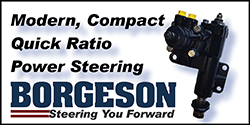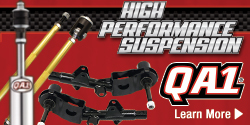You are using an out of date browser. It may not display this or other websites correctly.
You should upgrade or use an alternative browser.
You should upgrade or use an alternative browser.
For all of You Train Lovers
- Thread starter khryslerkid
- Start date
B570RR440+6
Well-Known Member
B570RR440+6
Well-Known Member
B570RR440+6
Well-Known Member
B570RR440+6
Well-Known Member
B570RR440+6
Well-Known Member
B570RR440+6
Well-Known Member
B570RR440+6
Well-Known Member
B570RR440+6
Well-Known Member
B570RR440+6
Well-Known Member
B570RR440+6
Well-Known Member
- Local time
- 1:45 AM
- Joined
- Mar 10, 2010
- Messages
- 31,367
- Reaction score
- 56,415
- Location
- Hanover, Pennslyvania
This print was given to me today!

G.W.R. 4200 CLASS STEAM ENGINE No 4570
G.W.R. 4200 CLASS STEAM ENGINE No 4570
- Local time
- 1:45 AM
- Joined
- Mar 10, 2010
- Messages
- 31,367
- Reaction score
- 56,415
- Location
- Hanover, Pennslyvania
Found these online.



Looks like you would have your hands full with these!

Looks like you would have your hands full with these!
- Local time
- 10:45 PM
- Joined
- Mar 14, 2012
- Messages
- 19,537
- Reaction score
- 41,226
- Location
- Surrey, B.C. Canada
Oddballs. Almost all locomotives fall into three categories: Steam, diesel/electric and pure electric. There were some switch engines that were powered by compressed air, but they weren't main line engines.
Then there was the Union Pacific, who experimented with gas turbines to drive the generators. These experiments in the 1950s and 1960s resulted in the most powerful locomotives made - over 8500 hp. One of the engines ran for awhile in the late '50's on propane as a further experiment.

One more experiment along these lines brought back a return to coal in the 1960s. A single experimental engine used both a 2000 hp. diesel plus a turbine....powered by finely ground coal instead of fuel oil. The coal turbine was rated at 5000 hp for a total of 7,000 hp. for locomotive 8080. Problems with this type of fuel stopped the program after a 20 month trial.

Then there was the Union Pacific, who experimented with gas turbines to drive the generators. These experiments in the 1950s and 1960s resulted in the most powerful locomotives made - over 8500 hp. One of the engines ran for awhile in the late '50's on propane as a further experiment.

One more experiment along these lines brought back a return to coal in the 1960s. A single experimental engine used both a 2000 hp. diesel plus a turbine....powered by finely ground coal instead of fuel oil. The coal turbine was rated at 5000 hp for a total of 7,000 hp. for locomotive 8080. Problems with this type of fuel stopped the program after a 20 month trial.
YY1
Well-Known Member
- Local time
- 10:45 PM
- Joined
- Mar 14, 2012
- Messages
- 19,537
- Reaction score
- 41,226
- Location
- Surrey, B.C. Canada
Continuing with the turbine theme, there were some gas turbine (jet engine) trains here in the 1960s. In the USA, the Department of Transportation worked with United Aircraft on these high speed passenger trains. Powered with modified Pratt & Whitney PT6 engines (ST6), this one hit a maximum of 170 mph.

It was later run in AMTRAK colors. Amtrak stopped using them in 1976.

Meanwhile in Canada, the same design was used and built in Canada. CN had five complete trains made and in operation by 1969. One feature of these trains is that they tilted when traveling around a curve in order to maintain stability and ride comfort.

After CN (and CP) discontinued passenger service in the late '70s, VIA RAIL continued the train service. They operated until 1982. Although they had managed 140 mph, the usual speed was about 100 mph due to the number of crossings and rail infrastructure that was geared for freight traffic.

It was later run in AMTRAK colors. Amtrak stopped using them in 1976.
Meanwhile in Canada, the same design was used and built in Canada. CN had five complete trains made and in operation by 1969. One feature of these trains is that they tilted when traveling around a curve in order to maintain stability and ride comfort.
After CN (and CP) discontinued passenger service in the late '70s, VIA RAIL continued the train service. They operated until 1982. Although they had managed 140 mph, the usual speed was about 100 mph due to the number of crossings and rail infrastructure that was geared for freight traffic.
- Local time
- 10:45 PM
- Joined
- Mar 14, 2012
- Messages
- 19,537
- Reaction score
- 41,226
- Location
- Surrey, B.C. Canada
Maybe a different song? The Red Barchetta in Rush's song was about a two seat sports car. But we need more train songs. 
YY1
Well-Known Member
How long since you listened to the song? The protagonist stows away on a turbo train to escape the surveillance cameras in the city.
The song was also heavily influenced by an op/ed piece in a motorist publication called "A nice Morning Drive"- lamenting the ever increasing size of cars in general and mandatory safety devices.
The song was also heavily influenced by an op/ed piece in a motorist publication called "A nice Morning Drive"- lamenting the ever increasing size of cars in general and mandatory safety devices.
Similar threads
- Replies
- 11
- Views
- 1K
- Replies
- 2
- Views
- 323
















